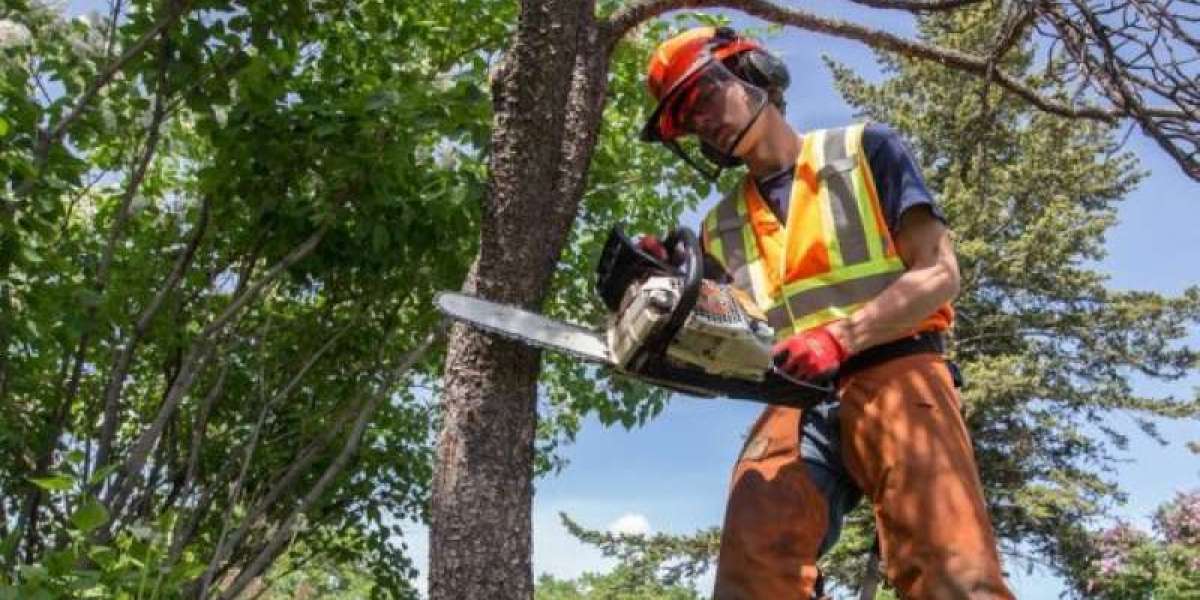Tree removal is sometimes the only option when a tree becomes hazardous, diseased, or obstructive to structures and utilities. While trees provide many benefits, there are situations where removal becomes critical for safety, property protection, and overall landscape health.
When Is Tree Removal Necessary?
Tree removal should be considered when:
The tree is dead or dying, with little to no foliage during growing seasons.
There is structural damage such as a leaning trunk or large cracks.
The roots are damaging foundations, sidewalks, or underground utilities.
A tree is infected with disease or pests that may spread to other trees.
The tree obstructs construction projects or interferes with power lines.
The Tree Removal Process
Inspection & Risk Assessment
Certified arborists evaluate the tree's condition, surrounding area, and hazards.Permitting (if required)
In many regions, permission from the city or HOA is required before cutting down protected trees.Safe Removal Execution
Professionals use specialized equipment like chainsaws, ropes, cranes, and rigging systems to remove the tree safely, especially in tight or urban spaces.Debris Cleanup
Reputable tree service companies will remove logs, limbs, and wood chips, leaving the site clean and tidy.Optional: Stump Grinding
After removal, stump grinding eliminates the leftover base, making space for new landscaping.
Why Hire Professionals for Tree Removal?
Tree removal is dangerous work that should never be DIY unless the tree is small and easily accessible. Professionals are trained, insured, and equipped with the right tools to handle hazardous trees, especially those near homes, roads, or power lines.
Benefits of Expert Tree Removal
Protects Property: Prevents falling limbs or trees from damaging homes, fences, or cars.
Improves Safety: Removes unstable or diseased trees before they fall during storms.
Increases Curb Appeal: Clears unsightly or poorly placed trees to improve landscaping.
Average Cost of Tree Removal
Tree removal costs vary depending on size, location, and complexity:
Small Tree (under 30 ft): $150 – $400
Medium Tree (30–60 ft): $400 – $900
Large Tree (60–100 ft): $900 – $2,500+
Emergency removals, such as after storm damage, may cost more due to urgency and risk.
Environmental Considerations
While tree removal is sometimes necessary, it’s also important to consider the environmental impact. Trees help reduce carbon dioxide, provide shade, and support local wildlife. That’s why professional arborists always assess whether removal is truly the best option, or if pruning, bracing, or treatment can preserve the tree.
If a tree must be removed, consider planting a replacement tree elsewhere on your property to maintain ecological balance and continue contributing to the environment.
Emergency Tree Removal
Sometimes trees need to be removed immediately—especially after storms, strong winds, or heavy rainfall. Emergency tree removal services are available 24/7 for situations where:
A tree has fallen on a house, fence, or car
Branches are blocking roads or driveways
There’s an immediate threat to life or property
These removals are typically prioritized and may involve cranes or other advanced machinery to ensure a fast, safe response.
Tree Removal and Property Value
Though it may seem counterintuitive, removing a tree can increase property value when:
It improves the visibility of your home
It opens up space for landscaping or outdoor living
It eliminates hazards that buyers might worry about
A well-maintained yard with healthy, properly placed trees will always be more appealing than one crowded with dying or unsafe trees.
How to Prepare for Tree Removal
Before the crew arrives, homeowners can take a few steps to make the process smoother:
Clear the area around the tree (patio furniture, vehicles, decorations)
Inform your neighbors if heavy machinery will be used
Ensure pets and children stay indoors during removal
Confirm whether stump removal or grinding is included
Stump Removal After Tree Cutting
After the main tree is gone, a tree stump is often left behind. Some homeowners leave it as a natural seat or garden feature, but many choose to have it removed for aesthetic and safety reasons.
Stump grinding is the most effective way to remove it below ground level, preventing future growth or tripping hazards. You can even cover the area with sod or plant grass afterward.
Choosing the Right Tree Removal Company
Not all tree service companies are the same. When hiring a tree removal expert, look for:
ISA-certified arborists
Proof of insurance and licensing
Positive reviews and customer testimonials
Transparent pricing and written estimates
Emergency service availability
Avoid hiring the cheapest option—cut-rate services often lack insurance or experience, which can be risky for both you and your property.
Final Thoughts
Tree removal is a vital service for homeowners dealing with aging, damaged, or dangerous trees. When handled professionally, it enhances your home’s safety, appearance, and value. Whether it’s planned or an emergency situation, choosing a qualified, insured tree removal company ensures peace of mind and long-term protection for your landscape.



